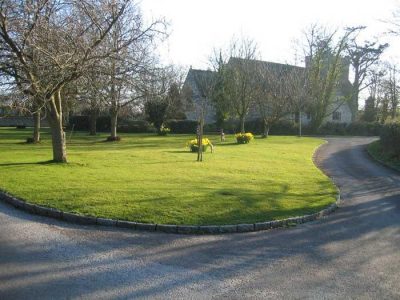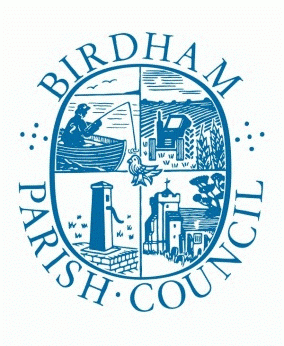Birdham Village

Some notes on the history of Birdham
Birdham lies four miles south of Chichester and is a Parish of approximately 1800 acres (730 hectares), bounded by the Parishes of Appledram, Sidlesham, Earnley, East Wittering, West Wittering and West Itchenor.
It is believed that two Roman roads met at the present Bell Lane junction and the road led from there to Chichester Harbour and on to Bosham via a ferry or a ford.
In 683 various Parishes on the peninsula south of Chichester, including Birdham, were given by the Saxon king Caedwalla to St Wilfred. This seems to be the earliest mention of Birdham. Birdham appears as Brideham in the Domesday Book of 1086, which also records the presence of a mill.
The Church, which was dedicated to St Leonard until about 1900 but is now dedicated to St James, was built in the 14th century and has a 16th century tower. It was much restored in the 19th century.
The area either side of the main A286 road from Chichester to the Witterings was formerly Birdham Common. It extended from south of Manhood End Farm (17th century) to the Lamb Inn and was enclosed by the Birdham Common Act of 1793. A straight road was later built across it. The original line of the main road from Chichester left the present road and crossed the fields to Martins Lane and from there to the Church.
The Chichester Canal from Birdham to Arundel, with a spur to Chichester from Hunston, was built around 1822 and ceased operation in 1906, though there was occasional boat traffic up to 1912. The lockkeeper’s house became the Egremont Arms inn and later a private residence.
In 1831 the population of Birdham was 486 and this remained more or less constant until the First World War. The population in 1991 was 1263.
Church Lane leads from Birdham Straight to the Church and was originally known as Normans Lane. The Birdham Hotel, at the junction of Birdham Straight and Church Lane, closed in 1984, when it was the Bird and Ham Inn. Cherry Tree Cottage, next door, was the village bakery.
The present Birdham Mill, with its Mill Pond by the harbour, dates from 1768 and when it ceased operating in 1935 was the last tidal mill in Sussex. It operated for three and a half hours before and after high tide. In 1935 the long established Farne family sold their house at Court Barn, the Mill and all its land to Captain H.R.S. Coldicott, who founded Birdham Estates Ltd and enclosed the outer Mill Pool for a harbour for small boats at all stages of the tide.
The Village Hall was opened in 1954 on land sold to the Parish Council in 1951 by William Farne and his sister Mildred Adams. The Hall was completely repaired and refurbished in 2005/6. A Scout Hut was added in 1964.
Also in 1964 a new Church of England Primary School was opened in Crooked Lane.
In 1965 Chichester Marina, created on former marshes north of Birdham Pool, was flooded for the first time. The northern boundary of the Parish runs through it from west to east.
(see also the Archive notes on the history of Alandale Road)

